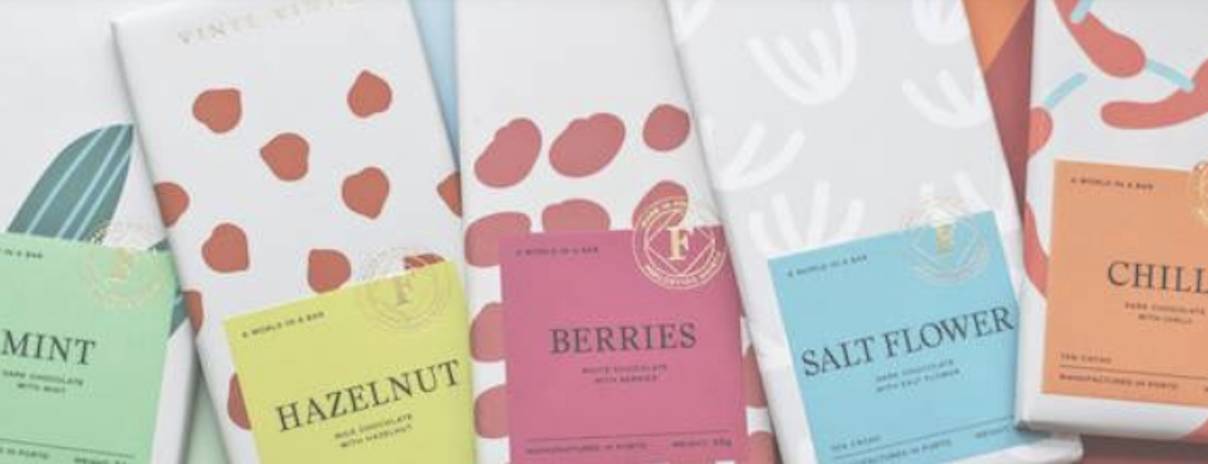
Passion In A Piece of Chocolate
Passion In A Piece of Chocolate
The cacao pod, its beans, and the delicious concoction we call chocolate have been considered medicinal, body and soul strengthening, giving of life and fertility, an aphrodisiac, and even currency throughout its long and rich history.
For many decades, even centuries, chocolate consumption was considered appropriate only for royalty and rulers. In the 1200s, it’s said that the Aztec emperor Montezuma drank 50 golden goblets of a thick, unsweetened, dyed-red elixir called xocoatl (bitter water) each day. The Spaniards added sugar, vanilla, and spices to the bitter beverage in 1528, creating a fashionable drink for nobility. Marie-Antoinette arrived at the French Court in 1770 with her chocolate maker, dubbed “Chocolate Maker to the Queen,” expressly to please her majesty with a variety of elaborately flavoured drinking chocolates. It wasn’t until 1847 that chocolate was made into a solid confectionary, compliments of a British chocolate maker. By the early 1900s, Europe and America were producing melt-in-your-mouth chocolate confections to be enjoyed by anyone that could pony up the price at the till.
With the opening of The Chocolate Story in Porto’s World of Wine complex, Relish Portugal sat down with Chef and Chocolate Master (Mestre de Chocolate) Pedro Martins Araújo to learn more about the most well-loved sweet in the world and his artisan passion, Vinte Vinte Chocolate.
Relish Portugal: Congratulations on your wonderful chocolate venture, Vinte Vinte Chocolates. How did chocolate become your focus?
Chocolate Master Araújo: I like to say that chocolate chose me. It’s no surprise that chefs are passionate about raw ingredients and in cacao I found the perfect ingredient. Cacao is complex with a depth of flavour and possibility. Culturally, it’s revered as something holy in Mexico and Guatemala where it’s enjoyed from a young age as a beverage.
When I found an ingredient with this level of sophistication and the relationship with humankind and began tasting it, finding that it is so complex aromatically, I knew I’d found my holy grail.
RP: Your chocolate bar brand is Vinte Vinte or Twenty-Twenty. As in perfect vision?
CMA: Interesting but no. Vinte Vinte is a formal homage to the parallels of the Cacao Belt. It’s a tribute to the countries that produce some of the finest cacao, grown on the latitude position of 20°N and 20°S of the equator. This is the most ideal environmental condition for the cacao tree to develop and bear fruit, but more importantly, produce fruit of the best quality.
Our chocolate is made using a bean-to-bar process. We get cacao from all over the world, some I choose personally. I recently travelled to Nicaraguan, Mexican, and Guatemalan farms in search of the finest flavour and highest quality cacao.
The average consumer doesn’t know that many big brands don’t actually make chocolate. Someone roasted/toasted cacao beans for them and ground them into a mass. They start there, making their chocolates out of what’s sometimes called cacao liquor.
Making chocolate out of beans is quite a bit more challenging. First, you have to find the right beans. Next is fermentation. If cacao beans are not properly fermented, the technical reactions, the balancing of flavours, will never happen, you’ll never have aromatic cacao. Then you must develop a roasting profile for that specific bean and try to figure out which type of chocolate that bean will be best as. Not all are good as milk chocolate or dark chocolate.
RP: What should people look for when choosing chocolate?
CMA: People have a fixed idea about chocolate. In reality, chocolate can be many different diverse flavours. As you’d expect, industrial chocolate is extremely different than Vinte Vinte’s bean-to-bar product. Why? That pre-made, bulk mass used in industrial chocolate has no flavour or aroma at all. The beans are roasted at high temperatures requiring them to use a lot of vanilla to disguise what’s missing. Every single time a person tastes bean-to-bar chocolate it is a taste sensation. The flavour is so special they never forget their first taste of bean-to-bar chocolate. Remarkable.
Which chocolate should they have? The advice I give is for people to understand artisan chocolate will be memorable, different than what they’ve perhaps tasted in the past. I encourage them to discover the flavour profiles that they enjoy the most and experiment.
RP: What’s your favourite chocolate?
CMA: I choose my chocolate by the feeling it gives me. Look, I’ve tasted thousands of chocolates throughout my life. I’m not a benchmark. That being said, I’m always looking for chocolate with “corners”—looking for an effect, nothing boring. I like acidic chocolate. That could be 50% or 100% cacao content. Primarily, I’m looking for flavour and aroma. Interestingly, terroir—the same concept of place of origin as used when tasting fine wine—is usually 50% of the flavour.
RP: I’m sorry, let’s back up, you’ve tasted thousands of chocolates?
CMA: Right, thousands. But remember, I’ve been doing this for many years. In my experience, developing a roasting profile is critical. I have seven bean-to-bar chocolates in the Vinte Vinte line. It took me nearly 400 lab trials to develop those seven distinctive chocolates. Cacao begins to lose its magical compounds as it’s roasted close to and above 150°C degrees. You have to test and test and test to see which aromas to keep and which to lose. If you roast too high it will taste burned, too low it’ll taste like raw cacao. Each step in the chocolate-making process is important, but roasting is the most essential.
RP: Vinte Vinte has several different bars to choose from but I want to know more about the Grand Cru.
CMA: Vinte Vinte offers four different collections from Classic to our vintage Grand Cru. While our collection includes chocolate made with beans from Madagascar, Nicaragua, Dominican Republic, Uganda, and Venezuela, our vintage Grand Cru is made from single-origin beans harvested in 2019. As I mentioned earlier, terroir plays a large part in this chocolate. One variety, one farm, one arbour. It’s 70% dark, famed for its colour and aromatic flavours.
This vintage chocolate is fabulous paired with Taylor's Quinta de Vargellas Vintage Port 2012. That’s part of our just launched Chocolate and Port Pairing Workshop. One might think that these two wonders of mankind would be impossible to pair but, due to the high content of cacao butter present in dark chocolate, this paring is wonderfully balanced.
Visit Vinte Vinte’s online store - https://shop.wow.pt/vinte-vinte-chocolate - for bars, bonbons, cocoa powder, and more and visit their Porto lab and museum, The Chocolate Story, in the World of Wine complex.
Free-with-subscription English-language food and culture magazine for Portugal lovers everywhere, Relish Portugal is a gorgeous award-winning, quarterly, online publication chock full of interesting stories, make at home recipes, culinary and cultural luminaries, and so much more. Sign up and relish the bounty of riches that is Portugal: relishportugal.com.
